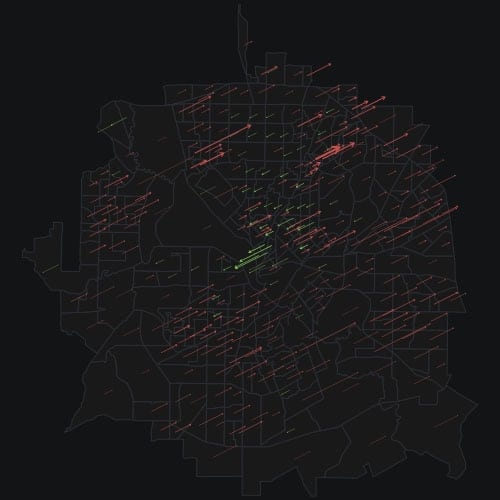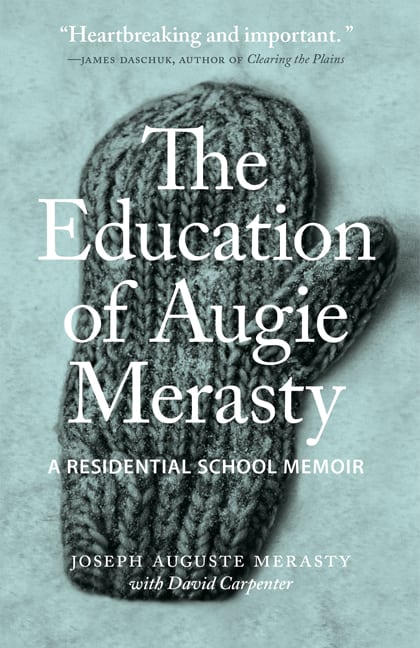See that dark, brooding image above? That is an attempt to illustrate the increases and decreases in poverty in different neighborhoods in Dallas. The red arrows represent where poverty has increased. They are thicker where populations are denser and longer where poverty has increased more. The green arrows represent where poverty has decreased. You can see them clustered around Uptown and fanning out through the central part of North Dallas. The biggest decrease looks to be in West Dallas.
Archive for September 2015
Stress, Coping, and Mental Health Differences among Homeless People
Depression and Political Participation
An Examination of the Interpersonal Psychological Theory of Suicidal Behavior in Physicians
BrdsNBz: Sexually Experienced Teens More Likely to Use Sexual Health Text Message Service
Visualizing Poverty Growth In Dallas
Brazilian HIV/Sexually Transmitted Infection (STI) Prevention for Adolescents With Mental Health Disorder
Designing and implementing peer formative feedback within online learning environments
Sexual Self-Concept Ambiguity and the Interpersonal Theory of Suicide Risk
Women with disabilities in leadership: The challenges of patriarchy
Contemporary representations of disability and interpersonal relationships of disabled women in south-western Nigeria
Gender & disability
A guide to research ethics for arts therapists and arts and health practitioners
Family concepts in early learning and development standards
Suicide in Canada: impact of injuries with undetermined intent on regional rankings
Offspring-Perpetrated Familicide: Examining Family Homicides Involving Parents as Victims
Stigma towards Marijuana Users and Heroin Users
Treatment-resistant major depressive disorder and assisted dying
Perceptions of Structural Injustice and Efficacy: Participation in Low/Moderate/High-Cost Forms of Collective Action
Factors Associated with Contraceptive Use and Intention to Use Contraceptives among Married Women in Ethiopia
A county-level analysis of persons living with HIV in the southern United States
Sexual Health Risk and the Movement of Women Between Disadvantaged Communities and Local Jails
Assessing the Relationship Between the Perceived Shelter Environment and Mental Health Among Homeless Caregivers
Cross (Unit)-Level Effects of Cohesion on Relationships of Suicide Thoughts to Combat Exposure, Postdeployment Stressors, and Postdeployment Social Support
Social Network Assessments and Interventions for Health Behavior Change: A Critical Review
Peer Contexts in Schools: Avenues Toward Behavioral Health in Early Adolescence
Young children’s mathematics references during free play in family childcare settings
Autonomous motivation of Omani early childhood pre-service teachers for teaching
A Retrospective Analysis of Children’s Assessment Reports: What Helps Children Tell?
Development and Validation of a Short Version of the Supervisory Relationship Questionnaire
God and Marriage: The Impact of Religious Identity Priming on Attitudes Toward Same-Sex Marriage
Motivational Interviewing in Social Work Practice
Managing and caring for distressed and disturbed service users: the thoughts and feelings experienced by a sample of English mental health nurses
{inverted question}Eres Amigo o Enemigo? Contextual Determinants of Latinos’ Perceived Competition with African-Americans
Subjective memory complaints, mood and MCI: a follow-up study
Child maltreatment: pathway to chronic and long-term conditions?
The Discretion of States in the Dublin III System for Determining Responsibility for Examining Applications for Asylum: What Remains of the Sovereignty and Humanitarian Clauses After the Interpretations of the ECtHR and the CJEU?
Thinking Matters: The Validity and Political Relevance of Need for Cognition
Agenda Setting in the Internet Age: The Reciprocity Between Online Searches and Issue Salience
Advocacy in the South African social welfare sector: Current social work research and possible future directions
The Education of Augie Merasty: A Residential School Memoir
Now a retired fisherman and trapper, the author was one of an estimated 150,000 First Nations, Inuit, and Metis children who were taken from their families and sent to government-funded, church-run schools, where they were subjected to a policy of “aggressive assimilation.” As Augie Merasty recounts, these schools did more than attempt to mold children in the ways of white society. They were taught to be ashamed of their native heritage and, as he experienced, often suffered physical and sexual abuse.

